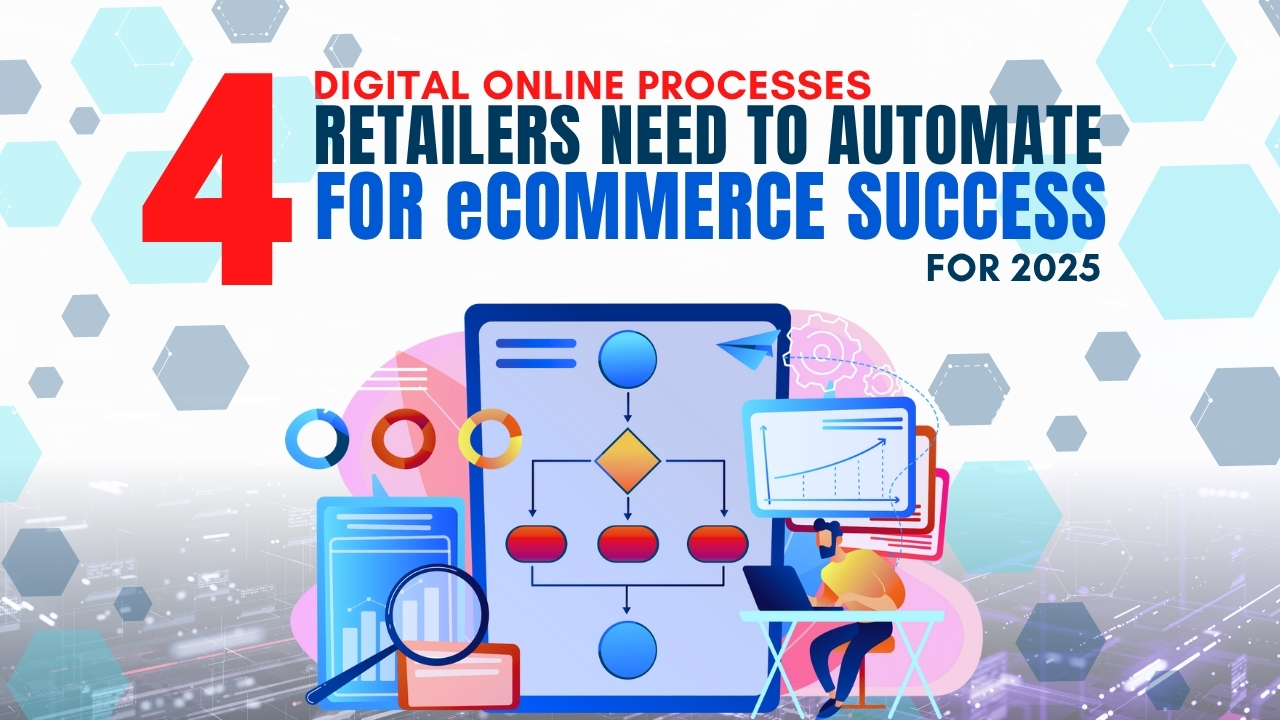Blog
4 Digital Online Processes Retailers Need to Automate for eCommerce Success
June 24, 2025 / 1 minute read / By Nick Borowitz

Blog

It would be remiss to say that everyone is shopping online now. It’s a known fact of life spurred on by countless factors over the past decade. Mentioning it is akin to everyone rolling their eyes and saying, “Yes, and?”
But what if we told you that while more customers are hitting the digital shopping place than ever before, there are retailers who haven’t fully embraced digital techniques that can help them capture more sales from those website visitors?
Retailers may not use the right point of sale and retail technology to help automate online processes, making winning more of those online sales possible. In this eCommerce success for retailers blog, we’ll discuss what processes SMB retailers can automate to turn more site visitors into website conversions.
When retailers use the right retail technology for their business and embrace the latest and greatest, they earn opportunities to earn more customers who will make repeat purchases!
Gone is the generic email-wide list blast; instead, you need to send real-time, context-aware messages that adjust based on online actions, purchase history, and current browsing patterns.
Powering email campaigns nowadays are AI-driven personalization that evolves with your customers’ behaviors and industry trends. Email marketing automation can lead to 6x more sales when done correctly, making it one of the most powerful tools in your digital arsenal.
For SMB retailers, this automation means:
By integrating your CRM data with marketing automation tools, you can craft campaigns that resonate across email, SMS, social media, and even in-app notifications, ensuring that every customer touchpoint is personalized and timely.
Sending fewer but more relevant emails is the secret to better open rates and fewer unsubscribes. Celerant’s integrated email marketing tools help retailers send targeted campaigns that customers want to open because they’re based on what they already care about.
Any digital marketing service’s abandoned cart recovery system has undergone extensive upgrades and modifications.
Rather than looping in a standard follow-up email, modern platforms like Celerant’s automated email system analyze real-time customer behavior to determine precisely when and how to reengage a hesitant shopper.
Converting abandoned carts directly translates to recovering revenue that would otherwise be lost forever. Statistics show that nearly 70% of online shopping carts are abandoned, representing a significant untapped sales potential.
| Recovery Method | Success Rate | Best For |
|---|---|---|
| Email Reminders | 15-25% | All customers segments. |
| SMS Notifications | 25-35% | Mobile-first shoppers |
| Push Notifications | 20-30% | Mobile shoppers app users |
| Retargeting Ads | 10-15% | Social media active customers |
With dynamic retargeting strategies, including personalized discount offers, interactive chatbots, or branded shopping app notifications, you can recover lost revenue by meeting customers at the perfect moment with the ideal incentive.
Set up behavior-triggered email sequences that activate when customers browse specific product categories but don’t purchase. These “browse abandonment” emails can capture interest before items are even added to the cart.
Loyalty programs are as dynamic as your customer base. With automation at their core, these systems track shopping habits and reward frequencies across all channels, from online stores to in-person visits.
Using advanced analytics, you can design loyalty rewards that adjust based on purchasing trends and seasonal behavior. The key to the success of a loyalty program is driving additional sales beyond what customers usually purchase.
Automated loyalty programs help SMB retailers by:
When customers know they’re earning points or rewards, they’re more likely to add extra items to their cart, upgrade to premium products, or make purchases they might have delayed. This ensures that each customer receives a personalized experience that drives repeat business and deepens the emotional connection with your brand.
Modern retail success depends on understanding your customers and reliably anticipating their needs. By securely storing and analyzing customer information, retailers can create personalized shopping experiences that feel intuitive and helpful rather than intrusive.
Smart customer data management goes beyond basic contact information. It encompasses purchase history, browsing behavior, seasonal preferences, size preferences, brand loyalties, and timing patterns. This comprehensive customer profile enables retailers to make targeted product recommendations that introduce customers to items they may not have initially considered but are likely to love.
Faster checkout processes with stored payment and shipping information reduce friction.
Personalized product recommendations help to increase sales by suggesting relevant items.
Improved inventory planning helps to understand what your customers want.
Enhanced customer service so representatives have the full context for better support.
Predictive marketing can anticipate customer needs before they express them.
When implemented correctly, customer data automation can increase conversion rates by up to 30% while improving customer satisfaction through more relevant, personalized experiences.
For example, suppose your data shows a customer regularly purchases athletic wear in spring but has never bought workout accessories. Automated recommendations can suggest complementary items like water bottles, gym bags, or fitness trackers. This strategic approach transforms passive browsing into active discovery, encouraging customers to expand their purchases beyond their original intentions.
As retail continues to evolve, the blend of AI, IoT, and blockchain isn’t just improving efficiency; it’s reshaping customer expectations. Automating these eight essential processes reduces manual intervention and gains a competitive edge in today’s fast-paced market.
Retailers who remain agile by adopting these dynamic, data-driven systems will find that automation does not threaten the human touch. It’s an enhancement. Stay mindful of your unique business needs, invest in robust integrations, and watch as each optimized process increases satisfaction, loyalty, and profitability.
Ready to take your retail operations to the next frontier? There’s never been a better time than 2025 to embrace the full spectrum of automation innovation.